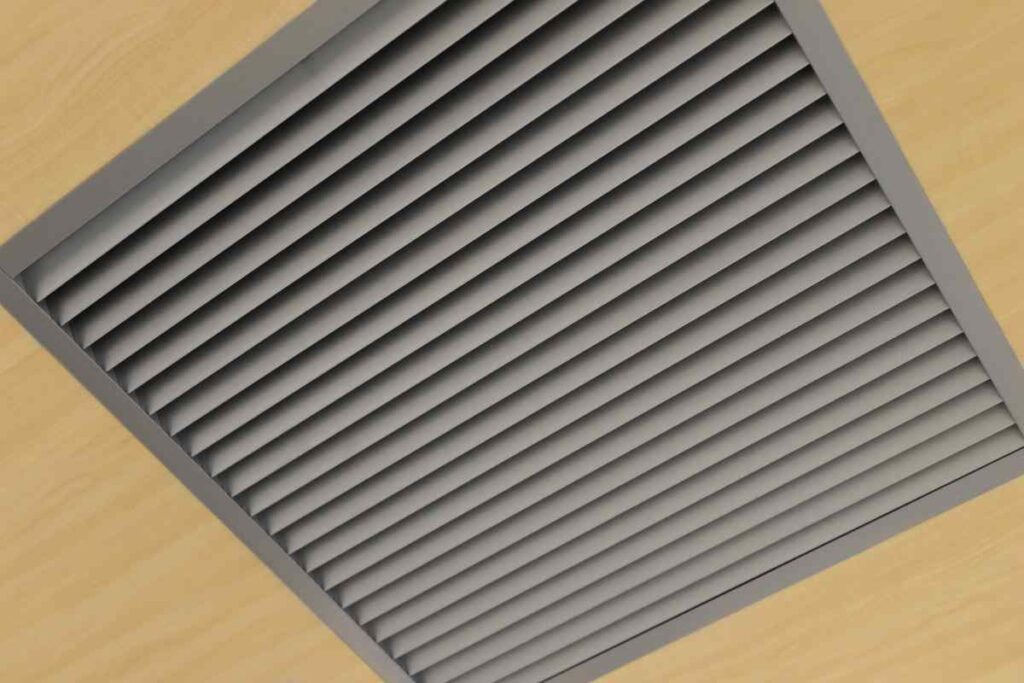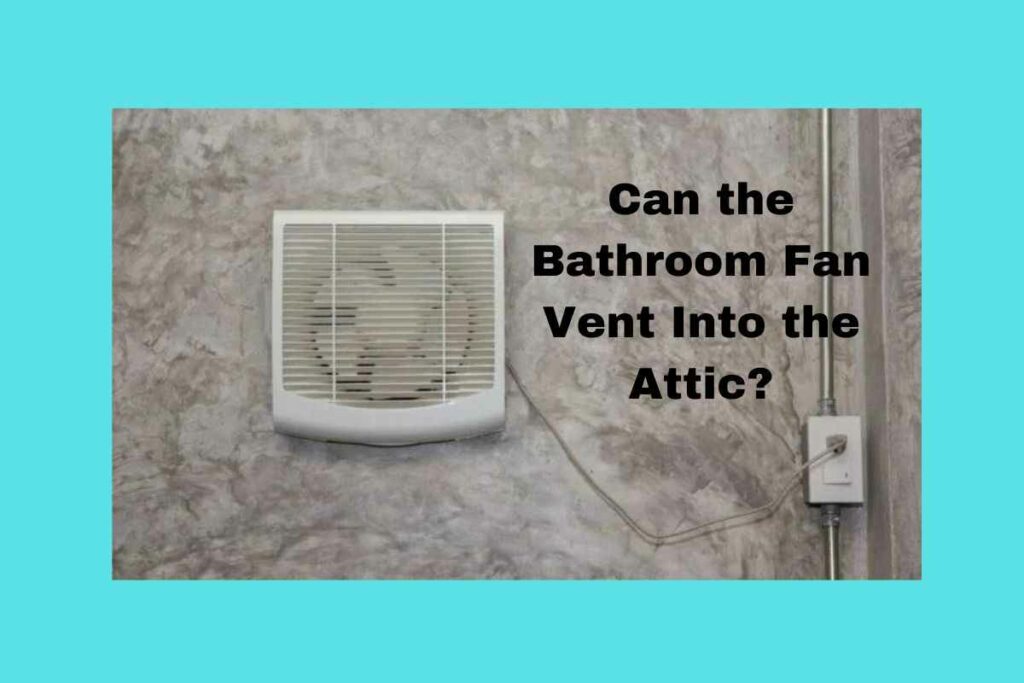No, you should not vent a bathroom fan directly into an attic.
Venting a bathroom fan into an attic can lead to moisture-rich air forming droplets on wood sheathing, insulation, rafters, and ceiling joists, which can result in mold growth and wood deterioration.
The proper way to vent a bathroom fan is to terminate the vent to the outside, either through a gable wall, the roof, or a soffit.
What Are The Potential Consequences Of Venting A Bathroom Fan Into The Attic?

Venting a bathroom fan into the attic can have several potential consequences.
It can promote the growth of mold and mildew, leading to wood deterioration and structural decay, which can eventually cause the roof to collapse.
It can also be bad for the home’s air quality and energy efficiency in the short run.
Additionally, it goes against most local building codes and regulations.
Therefore, it is not recommended to vent a bathroom fan into the attic.
Can You Explain Why Moisture-Rich Air In The Attic Can Lead To Mold Growth And Wood Deterioration?
Moisture-rich air in the attic can lead to mold growth and wood deterioration due to condensation.
Warm, moist air can become trapped in the attic and come into contact with the wood.
When this happens, condensation forms, leading to potential water damage if it continues to accumulate as water droplets.
This can happen due to blocked or insufficient ventilation, improper exhaustion of fans or dryer vents, and roof issues or leaks.
Moisture control is key to mold control, and it is important to act quickly when water leaks or spills occur indoors.
If wet or damp materials or areas are dried 24-48 hours after a leak or spill happens, in most cases, mold will not grow.
It is also important to clean and repair roof gutters regularly and fix plumbing leaks and other water problems as soon as possible.
Scrubbing mold off hard surfaces with detergent and water and drying them completely can help prevent mold growth.
Absorbent or porous materials, such as ceiling tiles and carpet, may have to be thrown away if they become moldy.
Mold can grow on or fill in the empty spaces and crevices of porous materials, so the mold may be difficult or impossible to remove completely.
What Are The Recommended Alternatives For Venting A Bathroom Fan?
There are several recommended alternatives for venting a bathroom fan, including:
- Use rigid metal or PVC plastic duct runs instead of flexible ducts to avoid impeding airflow
- Opening windows or doors to create a way for moist air to escape
- Using a heat recovery ventilator (HRV) or energy recovery ventilator (ERV) to exhaust stale air and bring in fresh air
- Installing a window fan or wall fan to exhaust air
- Using a dehumidifier to remove moisture from the air
How Can One Determine The Best Location For Venting A Bathroom Fan To The Outside?
To determine the best location for venting a bathroom fan to the outside, consider the following tips:
- Locate the fan in the area of the bathroom that is exposed to the most moisture, usually over the bathtub or shower.
- Plan the bathroom exhaust fan location so that the duct has the shortest and most direct route to the roof or wall vent.
- Ensure that the wiring for the bathroom vent fan is attached to a Ground Fault Circuit Interrupter (GFCI) and the fan is rated for a shower area.
- Determine the size that your bathroom fan vent needs to be, which is almost always a 3″ or 4″ pipe.
- Make sure that the bathroom exhaust fan vents to the outdoors, as required by building codes.
Are There Any Specific Building Codes Or Regulations Regarding Bathroom Fan Venting That Homeowners Should Be Aware Of?
Yes, there are specific building codes and regulations regarding bathroom fan venting that homeowners should be aware of.
The following are some of the codes and regulations:
- The International Residential Code (IRC) and National Electric Code (NEC) require bathroom fans in new homes
- The maximum length of the exhaust fan duct is determined by the CFM and diameter of the fan
- The minimum duct diameter is 3 inches
- The minimum fan speed of bath fans is 50 CFM
- Bathroom vent fans cannot terminate in an attic
- The window size in a bathroom needs to be at least 3 sq. ft. and one-half of it can be opened
- Bathroom exhaust fans installed above bathtubs and showers have further requirements
- The duct should be installed with the most direct route to the outside with as few bends as possible







